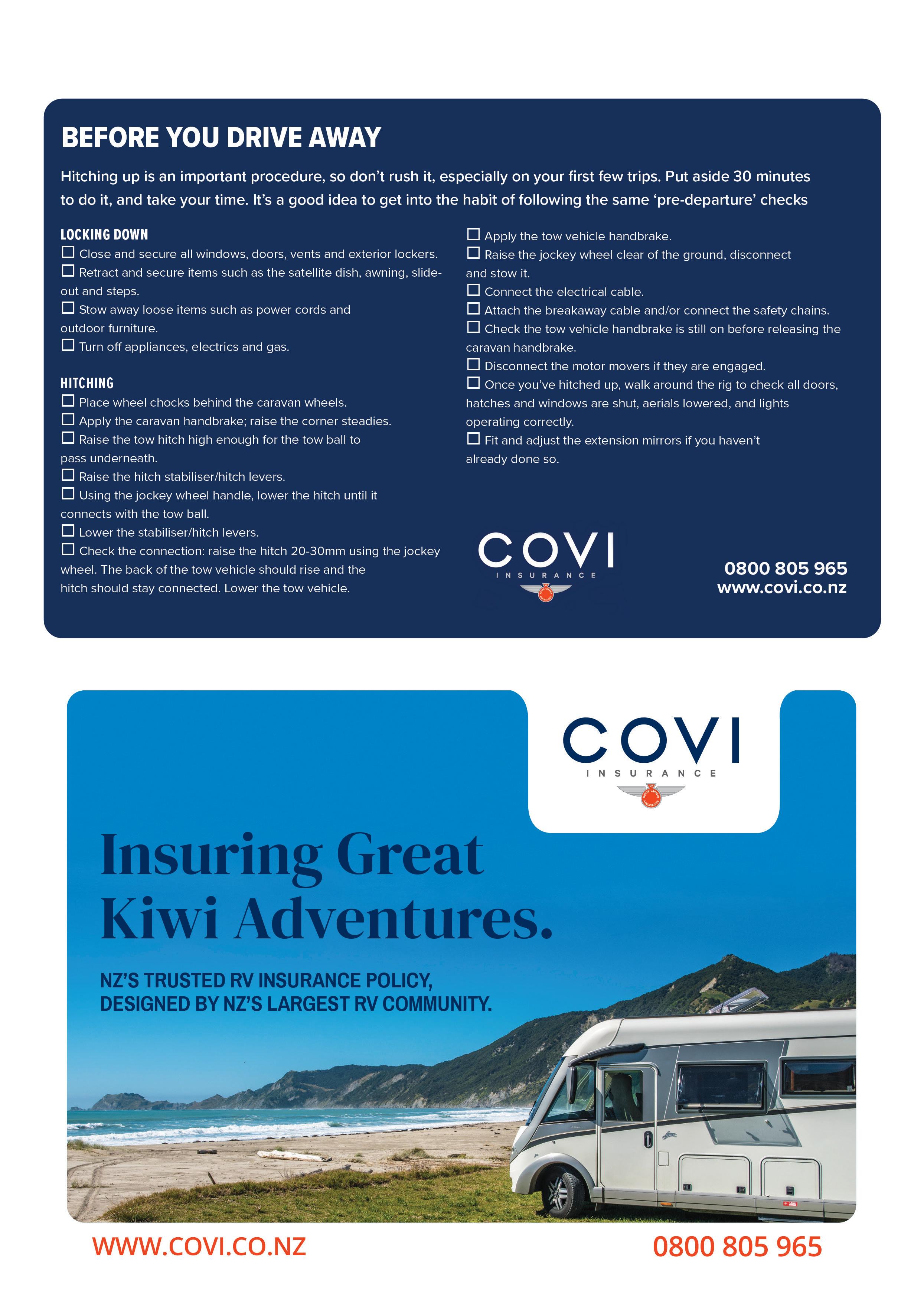
12 minute read
SEA CHANGE
Arthi at Rays Rest camping area, near Miranda

Advertisement
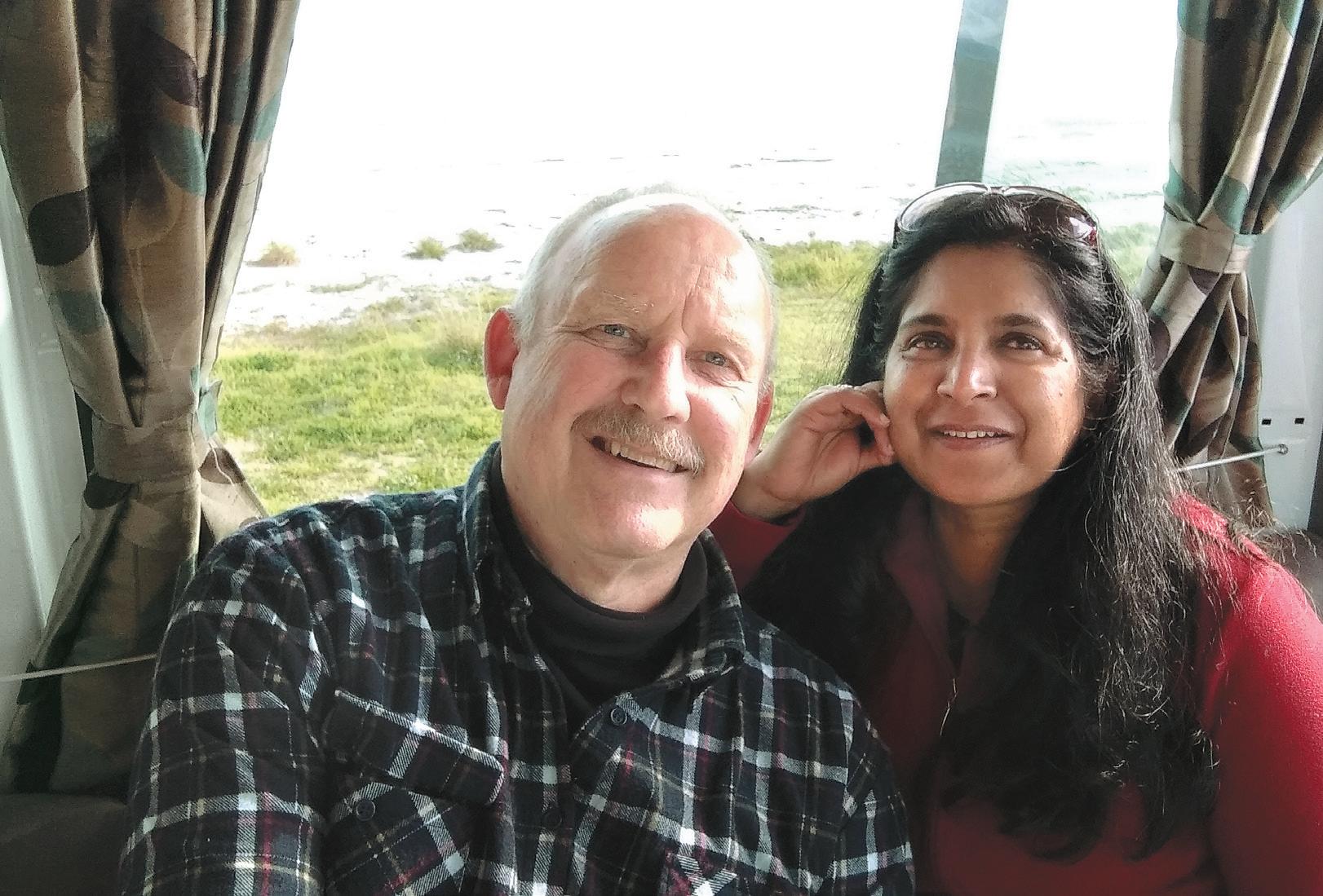

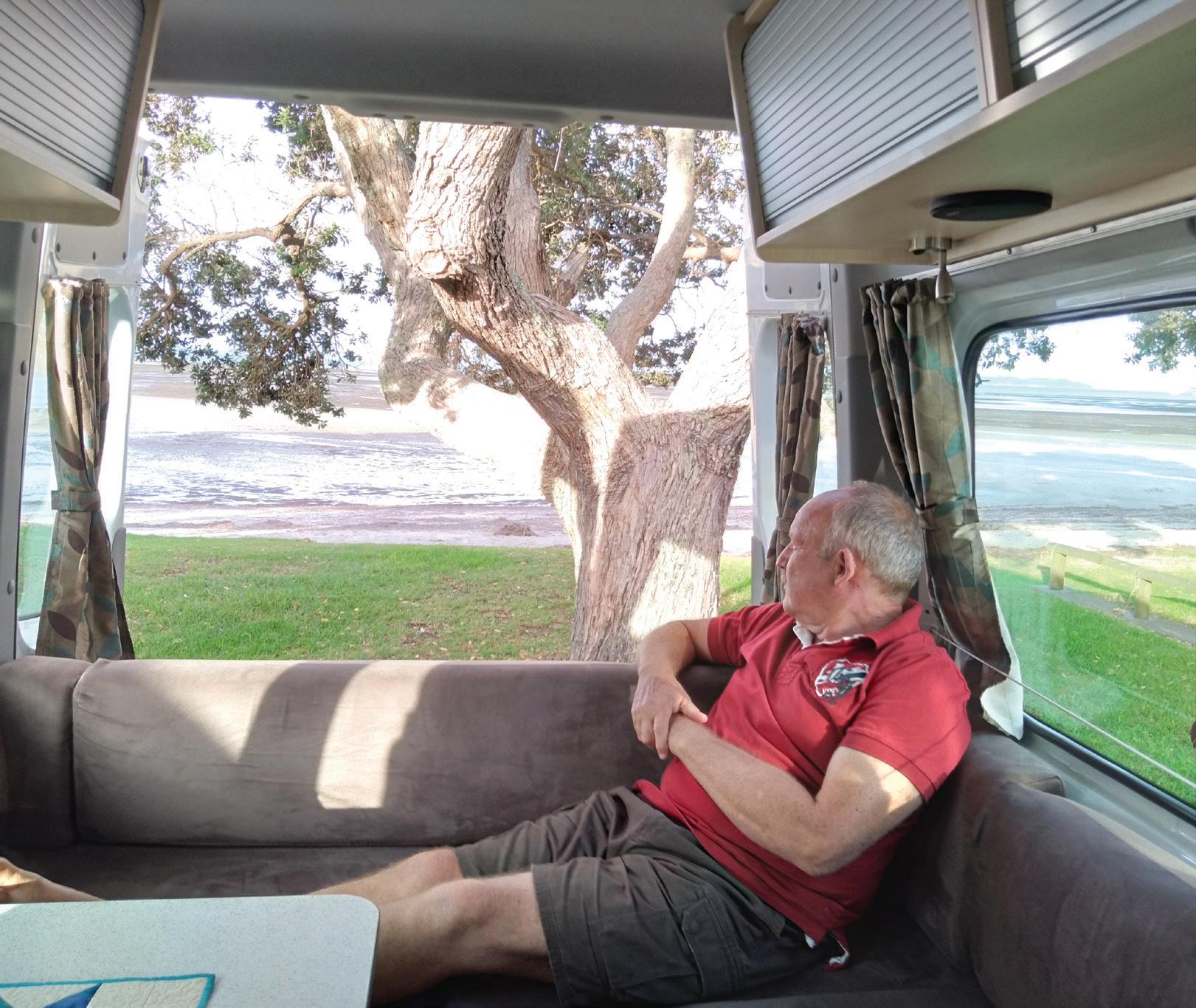
Like many before them, Arthi and Gary Fogelberg transferred their passion for boating to a love of motorhoming. Five months ago they bought an RV, and adapted easily to exploring on dry land. They talk to Jill Malcolm
What was your boating experience?
We had owned and enjoyed a yacht for the past 10 years. But when our two boys left home, we realised we couldn’t justify the costs that boat ownership demands. And as we didn’t use it at all during the long winter months, it seemed to be a lot of work and money for the number of times we were going out on the water.
Why did you decide to buy a motorhome?
We’d thought about the possibility of buying a motorhome for quite a while before we sold the yacht. Actually, it was a bit more than a thought, because we had started looking around on the internet, and were already beginning to work out what might suit us.
What did you identify as important to you?
GARY: It was more about the actual vehicle to start with. For the convenience of parking, backing and other manoeuvres we wanted it to be narrow, not too high and de nitely without a Luton. It was important to have something that Arthi would have con dence driving. So quite early on in our research, it became apparent that a converted van would be most suitable. We wanted a walk-through from the home to the cab and, of course, it had to be fully selfcontained. e only other aspect we were de nite about was that it be a two-berth. e rest was exible.
What did you buy?
At the RV Super Centre in Albany we were shown a 2015 KEA, ex-rental, Nomad M700 on a Mercedes Sprinter. It ticked all the boxes (bar one) and o ered
Gary relishes his move from yachting to motorhoming
Gary and Arthi are looking forward to discovering more of New Zealand
a lot more besides. Strictly speaking, the Nomad is a 2.5 berth, not a two-berth, as the dinette behind the driver’s seat converts to a small single bed. We thought we would never use it, but on one occasion it has already proved useful.
We liked the fact that the motorhome came at a xed price. ere was no negotiating, which made the buying process simple. We got what we paid for and could be con dent there would be no unwanted or costly surprises. e van also came with a one-year warranty. Inside and out it was very well presented, almost like new, because the company does a thorough clean and spruce-up when vehicles are returned from the rental eet, and xes any maintenance issues.
Have you made any changes?
GARY: Yes, and we are learning as we go. e rather large rubbish bin and a safe

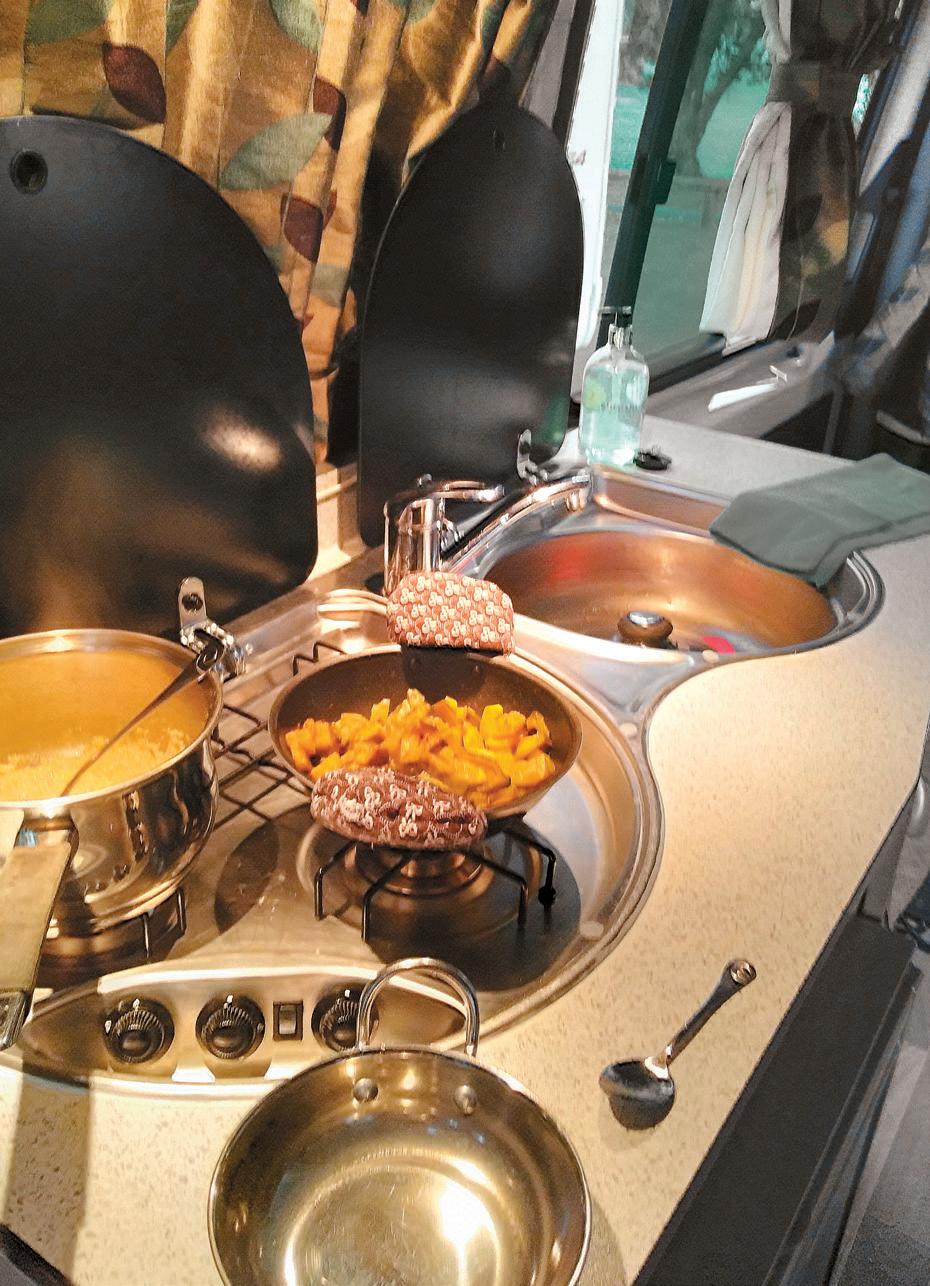
The couple replaced the curtains between the home and cab with refl ective windscreen mats In a small kitchen the trick is to be well organised and keep meals simple

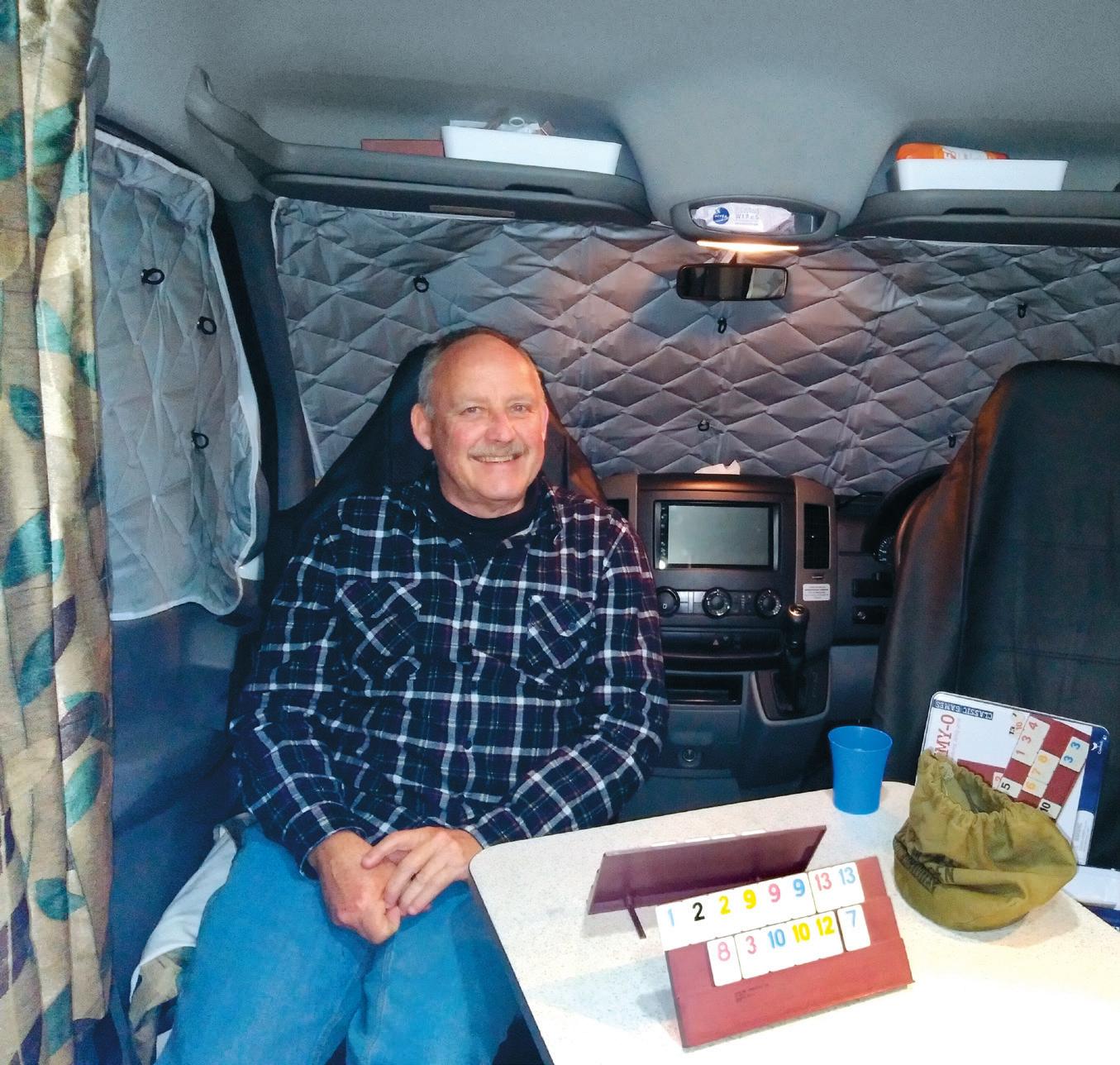
were xed over the wheel under a rear seat, and took up too much space. I took them out and xed the rubbish bin to one side of the kitchen bench near the sliding door. Now we can t the bedding into the space under the seat. I tted a tea towel rail to the side of the bench nearest the side door and in the bathroom, hooks for hanging our wet jackets. I also took out the half-size wardrobe and lled the space with shelves. is means we don’t have a wardrobe, but we don’t nd that a hardship. We just don’t take clothes that need hanging. We took out the curtains between the passenger seat and the home area, and replaced them with re ective windscreen mats so that we can use the rotating seats at night.
Another thing we might address at some stage is the water pump, which is quite noisy, although it’s noisier inside the van than outside. We were concerned it might upset our neighbours! e vehicle doesn’t come with an awning and at this stage, we feel we don’t need one and that some sort of tarpaulin might do the job. But we’re still thinking that through and could change our minds.
How do you nd the interior space?
GARY: e home is a bit tight on space, but well thought out. As long as we have the systems sorted and work out the ow for various chores, it’s comfortable and easily managed. To make a smaller space work, the challenge, as in yachting, is to be organised and systematic. In this way, you get around the compromises in the layout design and facilities.
Our morning routine, for instance, is that Arthi gets up and puts the kettle on for tea while I put the bedding away (in plastic to keep it dust-free) which only takes a few minutes. en we have the space to get showered and dressed, and prepare breakfast.
ARTHI: e bathroom is very small and has no cupboards, shelves, towel rails or mirrors. We’ve put a stick-on basket on one wall for shampoo and soap, and use heavy-duty stick-on hooks for heavier containers. e handbasin is tiny and sits in one corner, so to rinse our teeth we use mugs. ere’s a mirror on the wall outside the bathroom and we use that for anything we have to look at while abluting, as when Gary shaves. None of this presented a major inconvenience once we worked it out.
Another example is dishwashing. ere’s not enough room for two people to stand at the bench, so one of us washes at the sink and hands the wet dishes to the other who is seated at the dinette table, with the tea towel in hand.
In any compact area, another way to prevent chaos is to have a designated place for everything and a routine for putting each thing away after it’s used. is is not a problem for us because we are yachties, but it could be a learning curve for some.
How does the culinary department work? ere’s not a lot of bench space?
Both of us like to cook and luckily, we’re not messy cooks. Planning and keeping things simple are the keys. We don’t try to be too ambitious. e van has a three-burner gas cooktop and there’s an exterior slide-out barbecue at the rear of the van which is very handy in ne weather. e 110L fridge seems to have enough space at the moment, but we haven’t yet been away for long periods. We may have to add some sort of chiller bin. e storage space is adequate. We could probably go for a week without having to top up on groceries.
Are you pleased you’ve made the switch from yachting?
We’re thrilled. We absolutely love this way of exploring the small towns, regional parks and DOC camps around New Zealand, and we go away as much as work and weather will allow. We’ve already met some great people and stayed at some wonderful locations even in the middle of winter. e best so far has been the DOC camp at Tapotupotu Bay near Cape Rēinga in Northland. But as we journey around the country we’re sure we’ll come upon plenty more that are just as good.
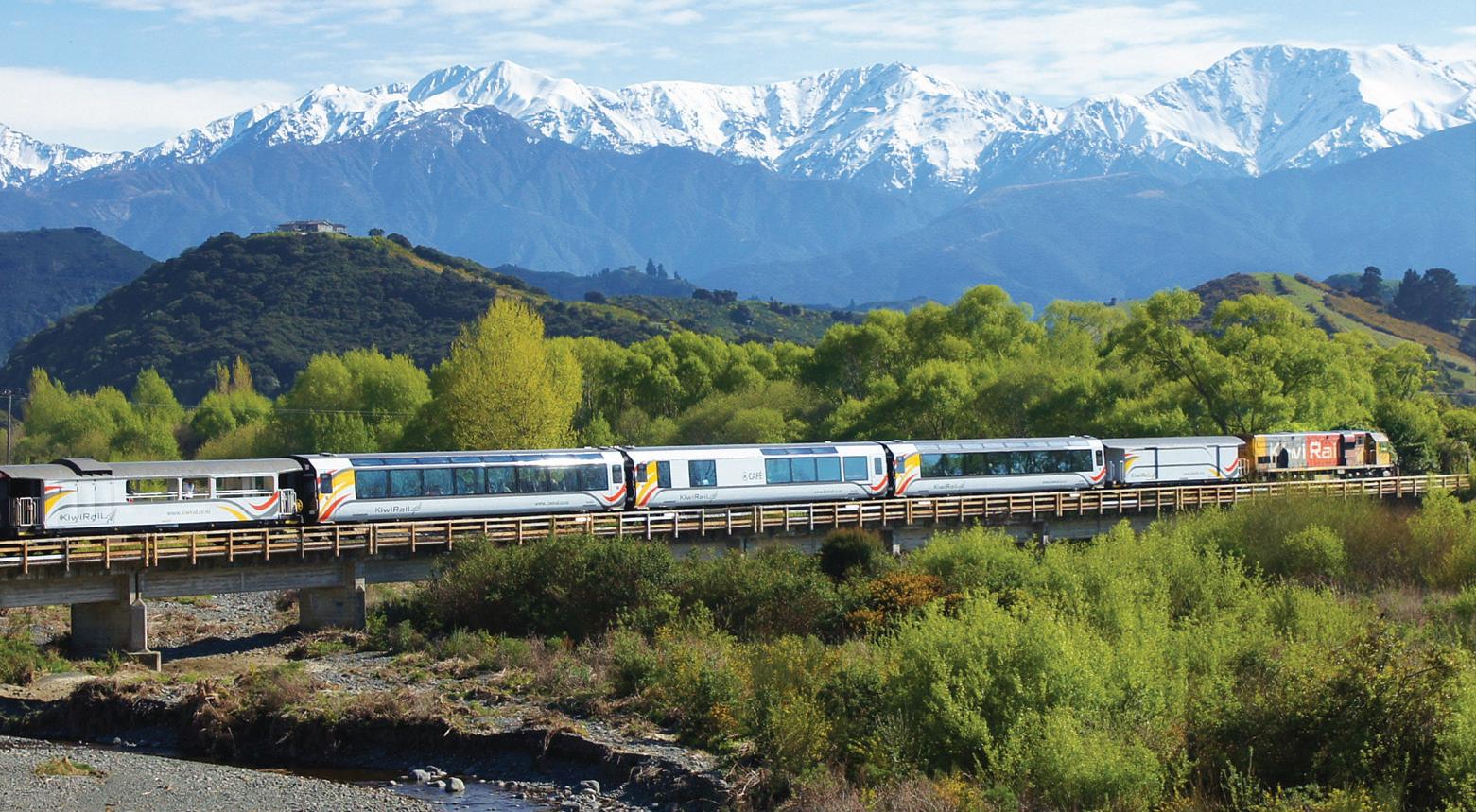
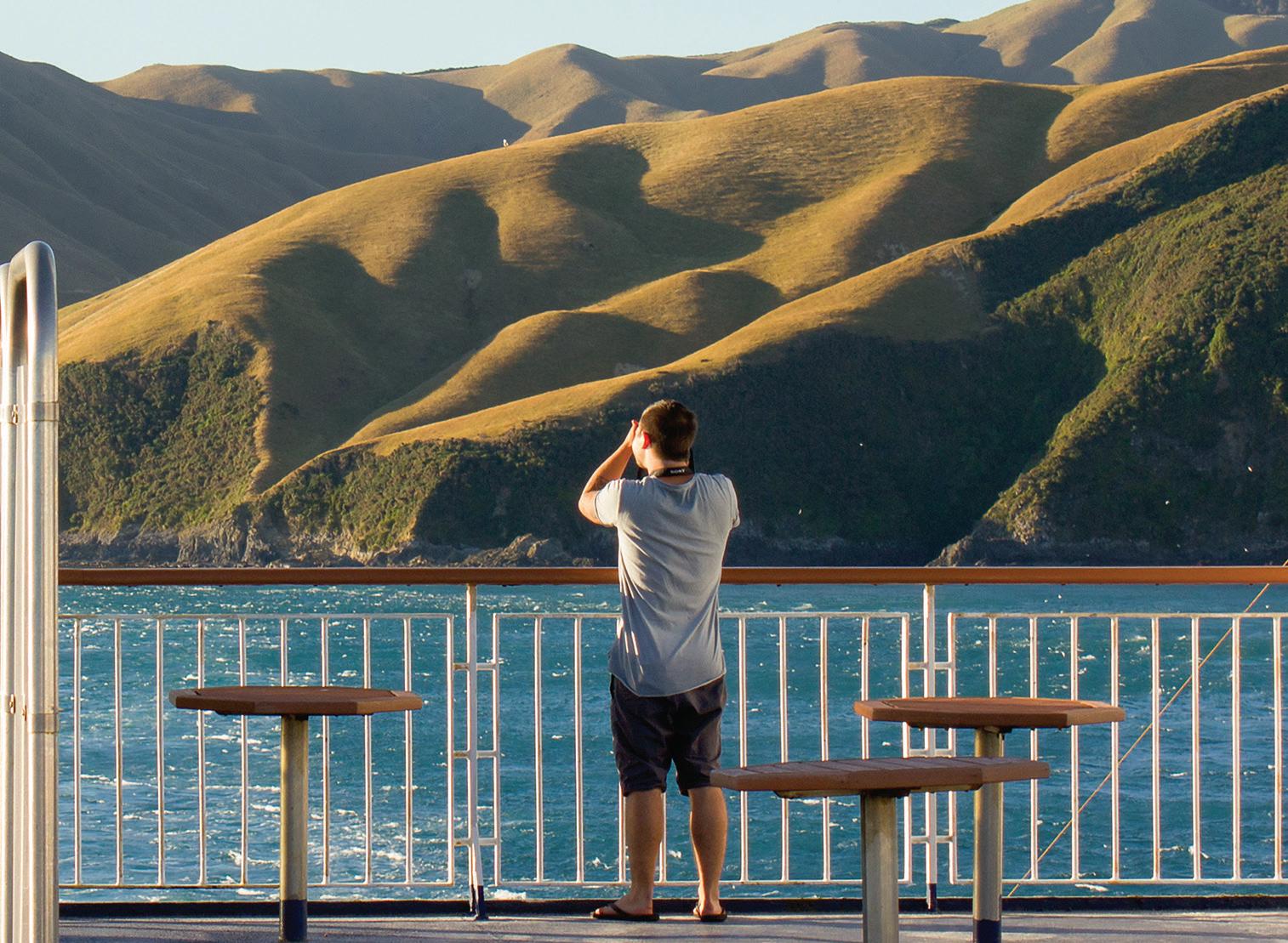
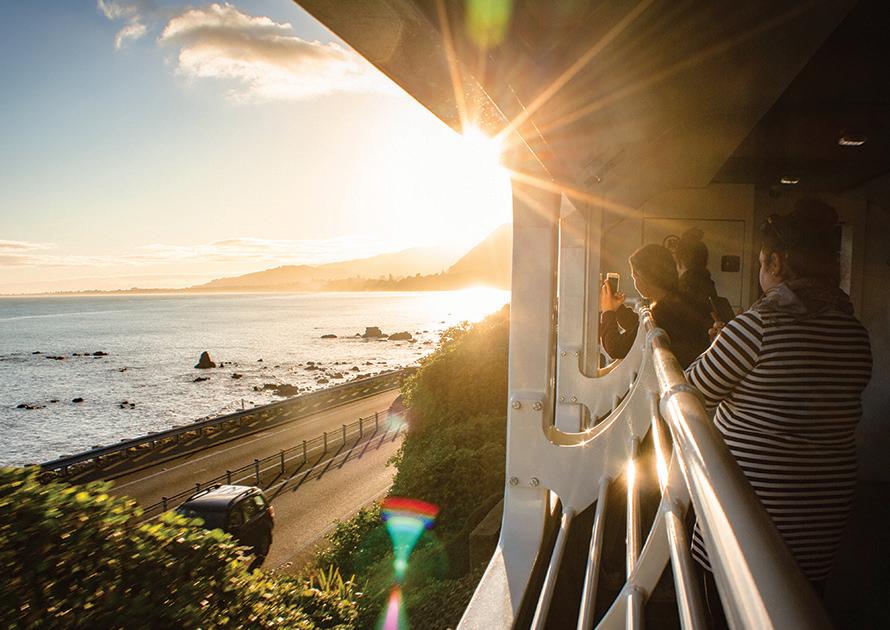

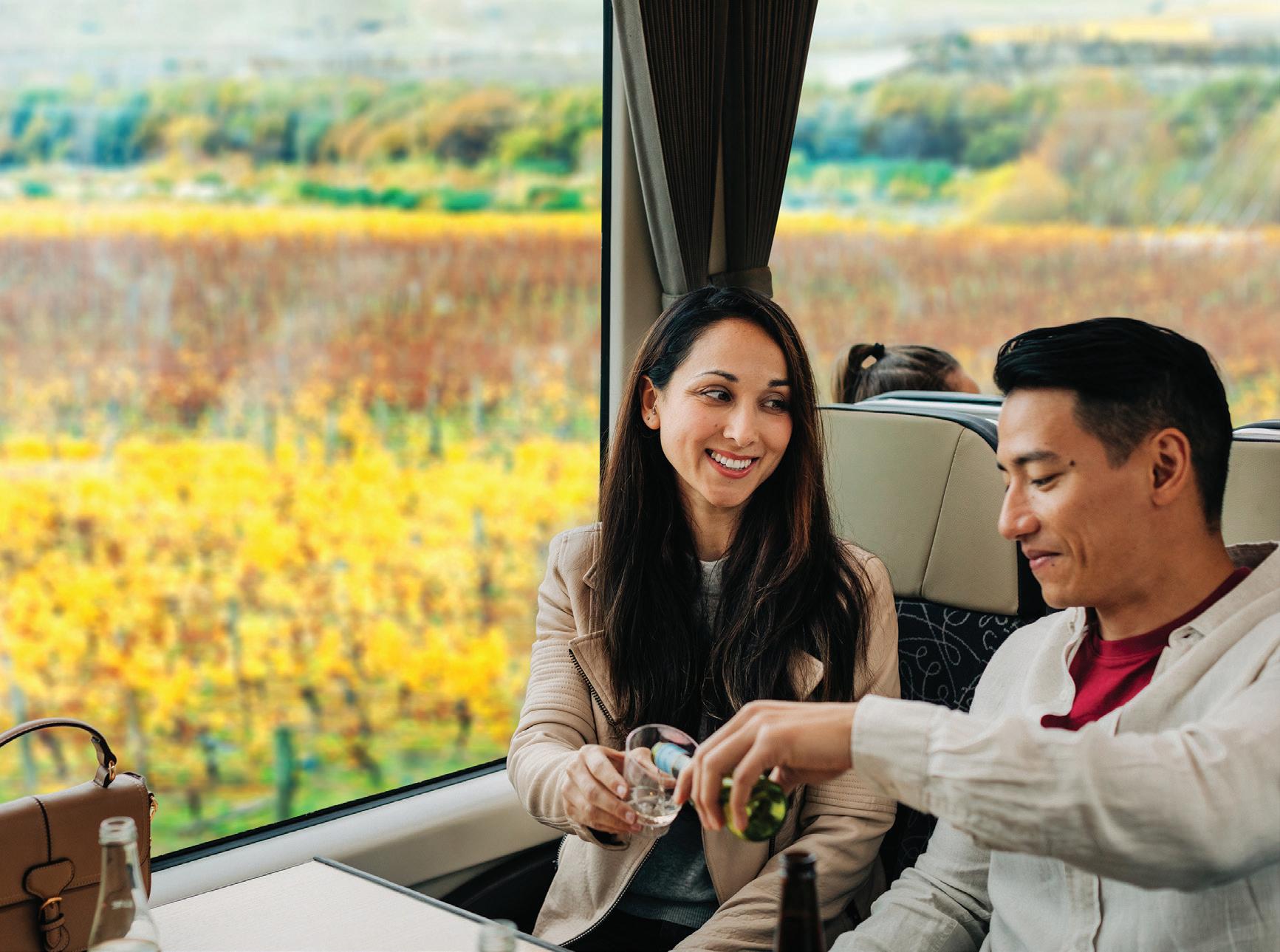
If you are an NZMCA member you can enjoy exclusive travel discounts and great benefits on all of our journeys.
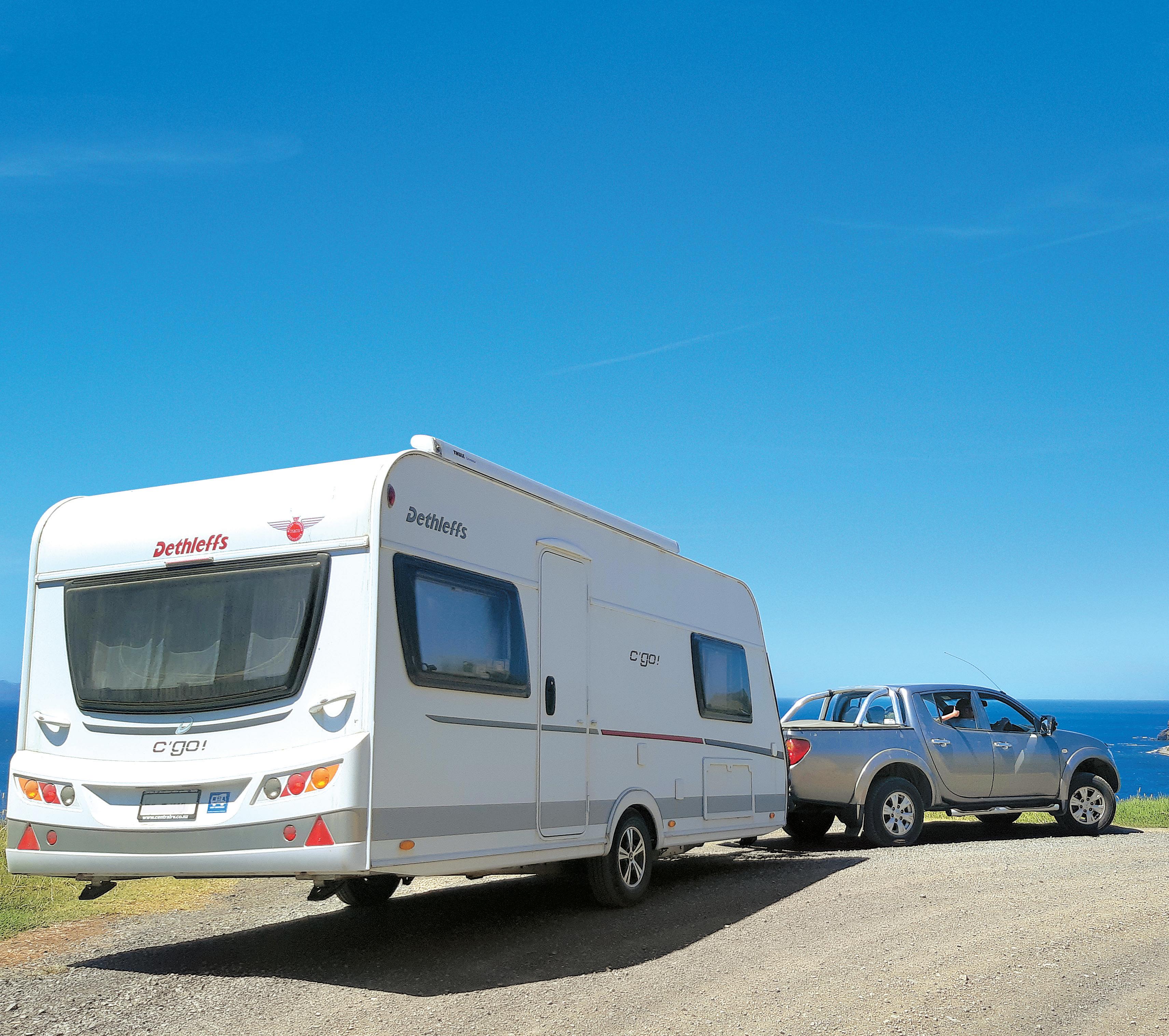
TOW THE LINE
As caravanning gains in popularity, it’s timely to look at the basic tasks of towing and hitching – and how to avoid costly mistakes.
New Zealanders’ appetite for adventure knows no bounds, so it’s little wonder people are attracted to the freedom that owning a caravan brings. But getting to grips with the nitty gritty of towing and hitching can be challenging – and getting it wrong can be expensive.
To help make your caravan journey safe and enjoyable, we’ve put together some practical tips from industry experts and the team at Covi NZMCA Insurance.
SELECTING A TOW VEHICLE
Many factors will determine whether your tow vehicle and caravan will combine well to provide smooth handling and more importantly, safe towing.
Brent Thurlow, manager of Taupō-based caravan dealership Central RV, says most buyers look at things like size, price, internal features and decor, but never take the caravan they are looking to purchase for a test tow, which he says is a mistake.
“You can do as much research as you like online, but really the most important thing you can and should do is take it for a test tow at the dealership,” he explains.
A lot of people use Toyota Landcruisers or Ford Rangers, but the caravan itself is a big factor in how it tows – it’s not just about the tow vehicle.
“Some companies don’t allow that, so it’s hard for customers to know what handles nicely (when being towed by a particular vehicle) and is safe, and what isn’t,” says Thurlow. A buyer needs to look beyond the towing capacity as that’s just one aspect.
TOW BAR TYPES AND HITCHES
Jayco Canterbury manager Tony McWhirter says simple things make a huge di erence, such as ensuring the tow bar and caravan hitch are at the same height. You can achieve a more even level with an interchangeable tongue (within limits). Although not common in New Zealand, tow stabilisers (or stability bars) are also available, if you are getting a lot of swing.
The loaded weight of the caravan is a key consideration, as is the weight of the vehicle you’re towing it with – including all luggage and passengers. A Ford Ranger has a 3.5-tonne tow-rating and 10 percent of that rating is what’s able to be put on the downforce tow ball, whereas in some European SUVs that’s only 5 percent, and that has caught a few people out!
It pays to remember that 10 percent of the weight of the caravan goes onto the drawbar. It’s transferred through the suspension of the tow vehicle, so the strength of its suspension is also a factor. Some vehicles just don’t tow well, so do your research and ask the caravan dealer for a tow test. You want to ensure you’re not driving something that simply isn’t a good match.
Jayco use a short-shank 50mm tow ball, rather than the European-style highrise tow ball.
SAFETY CHAINS/CABLES
A breakaway and relative brakecontroller is essential, mandated by law for caravans with electric brakes. While not legally required, most caravans also come with safety chains. This can be draw-bar mounted if it’s a 1.5-2.5-tonne unit, but must be an in-cab control system if it’s over 2.5 tonne.
SAFE WEIGHT DISTRIBUTION
McWhirter and Thurlow agree that proper weight distribution in any caravan is essential. Although technology can slightly mitigate the e ect of an uneven load, the age-old practice of ‘spreading the load evenly’ applies before making any trip. “We recommend loading the vehicle and caravan, and actually going to a weigh station at the dump and checking your total weight. If you’re over 6 tonnes then you should be getting a Class-2 driver’s licence,” says McWhirter.
DRIVING TECHNIQUES
Tow Vehicle
Hitch
Wiring Harness
Interchangeable Hitch Tongue
Pin
Ball Coupler
Drawbar
Safety Chains
towing drivers to overtake them, quite possibly without 100 metres of clear road ahead of them on straight sections, and even when approaching corners. Your vehicle will handle, steer, brake and react very di erently when towing a caravan!
SWAY CONTROL (ESC SYSTEMS)
These are getting pretty advanced. The latest Jayco caravans have a Lippert version with Gyro-Plus in the calorimeter. This applies minute adjustments to the brakes when the sensors are getting ‘out of square’, and instantly straightens you up. But again, there is no substitute for careful driving technique and expecting the unexpected on the road.
ACCIDENTS DO HAPPEN
Covi NZMCA Insurance Manager Ryan Lewis says they see a lot of claims from new caravan owners – especially damage done while reversing or moving at low speeds. He says drivers should take any additional precautions they can.
“We see so many accidents that involve caravans hitting static objects. Often these situations are avoidable by simply taking more time or care. If you are able to, then take the opportunity for somebody to get out of the vehicle and guide the driver,” Lewis says.
“These accidents often happen at home, at the end of a trip when people are tired, and often in a newer, unfamiliar vehicle.
“If an accident happens, the Covi team are just a phone call away. But of course, you want to do everything you can to minimise the possibility. Any claim will involve waiting for parts to arrive and waiting for the workshop to do the repairs, so it’s well worth your while taking that extra care.”
As a specialist RV insurance provider, Covi NZMCA Insurance understands the unique needs of motorhome and caravan owners. Covi’s policy is designed with RV travel in mind. That means you can have peace of mind knowing that your RV is protected, and if you do need to make a claim, the process will be handled by a Kiwi team who understand RVs. If you’d like to know more about Covi NZMCA Insurance and their comprehensive cover, visit covi.co.nz or call their team on 0800 805 965.
